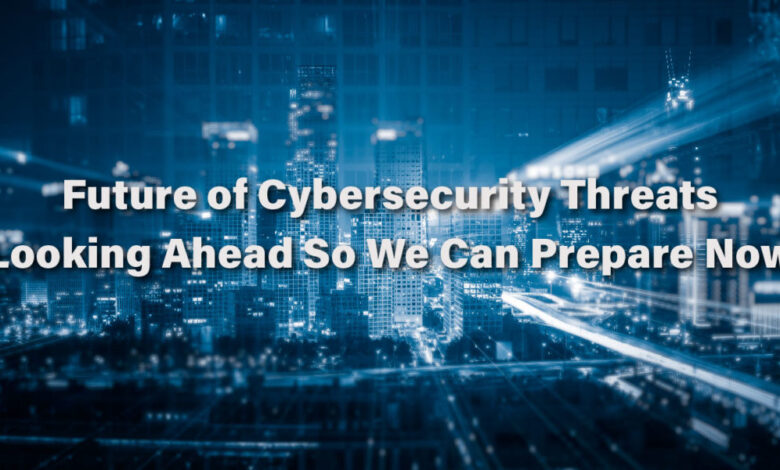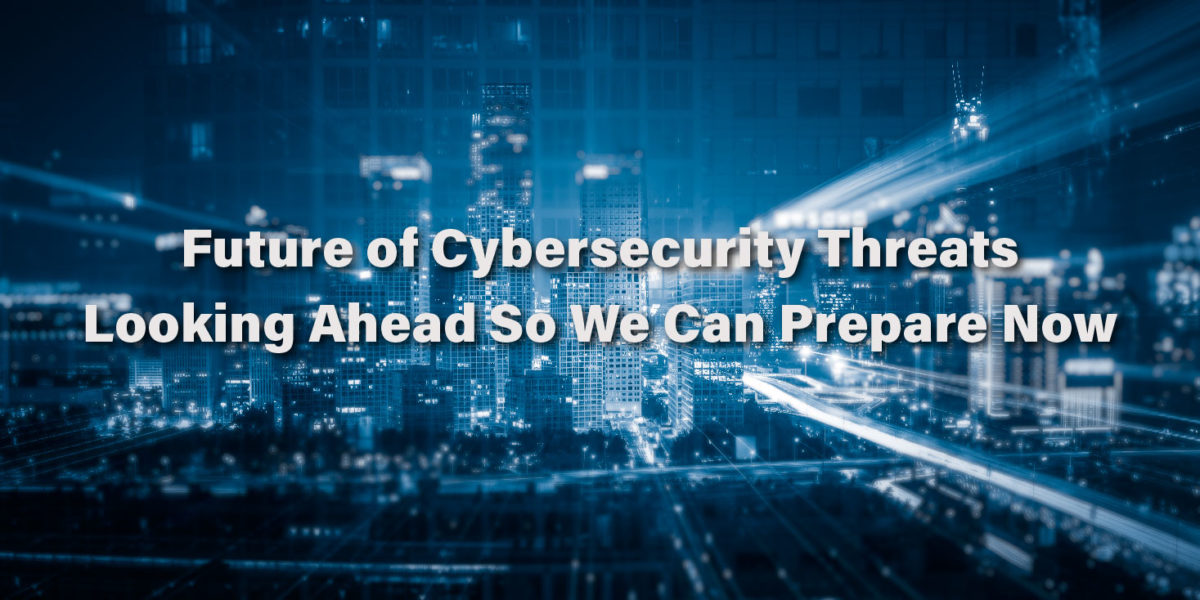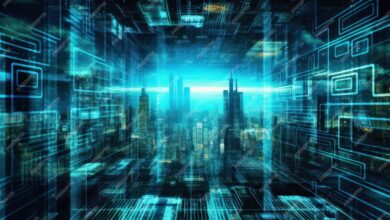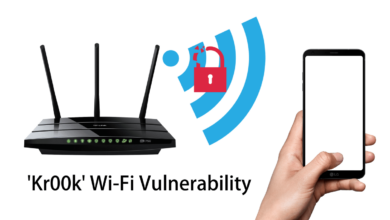
What is the Future of Cybersecurity?
What is the future of cybersecurity? That’s the million-dollar question, isn’t it? We live in a world increasingly reliant on technology, and with that reliance comes a growing vulnerability to cyberattacks. From the rise of AI and the ever-expanding Internet of Things (IoT) to the looming threat of quantum computing, the landscape is shifting rapidly. This exploration dives into the emerging threats, the evolving role of AI in defense, the crucial need for a skilled cybersecurity workforce, and the legal and regulatory frameworks shaping the future of online safety.
This isn’t just about tech; it’s about our personal data, our national security, and the very fabric of our interconnected world. We’ll unpack the complexities, explore the potential solutions, and hopefully leave you feeling a little more informed and a lot less anxious about what tomorrow holds in the digital realm.
Emerging Threats and Vulnerabilities
The landscape of cybersecurity is constantly shifting, with new threats and vulnerabilities emerging at an alarming rate. Predicting the future with complete accuracy is impossible, but by analyzing current trends and technological advancements, we can anticipate the likely evolution of cyberattacks over the next 5-10 years. This will involve a convergence of increasingly sophisticated techniques, leveraging advancements in artificial intelligence and exploiting the vulnerabilities created by the interconnected nature of our digital world.
Evolution of Cyber Threats
Over the next decade, we can expect to see a significant increase in the sophistication and scale of cyberattacks. Attackers will leverage automation and AI to enhance their efficiency and effectiveness. This means more targeted, personalized attacks, capable of bypassing traditional security measures with greater ease. We’ll also see a rise in the use of advanced persistent threats (APTs), where attackers maintain a long-term presence within a system to steal data or disrupt operations undetected.
The focus will shift from simple data breaches to more disruptive attacks aimed at critical infrastructure, supply chains, and even the manipulation of democratic processes. The sheer volume of attacks will also increase, fueled by the growing number of connected devices and the expanding attack surface. This will overwhelm existing security systems, necessitating a more proactive and adaptive approach to cybersecurity.
New Attack Vectors
Several new attack vectors are likely to emerge. One prominent example is the exploitation of vulnerabilities in Internet of Things (IoT) devices. The sheer number of interconnected devices, many with weak security, presents a massive attack surface. Attackers could compromise these devices to launch distributed denial-of-service (DDoS) attacks or gain access to sensitive data. Another potential attack vector is the use of synthetic media, such as deepfakes, to manipulate individuals or organizations.
Deepfakes could be used to create convincing phishing attacks or spread disinformation, undermining trust and causing significant damage. Furthermore, the increasing reliance on cloud services creates new vulnerabilities. Cloud security breaches could have devastating consequences, exposing sensitive data and disrupting critical operations for countless businesses and individuals. Finally, the rise of quantum computing presents both opportunities and threats, which will be discussed in more detail below.
Impact of Quantum Computing
Quantum computing holds immense potential, but it also poses a significant threat to current cybersecurity infrastructure. Quantum computers have the potential to break widely used encryption algorithms, such as RSA and ECC, which are the foundation of much of our online security. This means that data currently protected by these algorithms could become vulnerable to decryption. The impact on cybersecurity would be profound, requiring the development and implementation of post-quantum cryptography (PQC) algorithms.
This transition will be a complex and lengthy process, requiring significant investment and coordination across the industry. The race is on to develop and deploy PQC algorithms before quantum computers become powerful enough to break current encryption. Failing to do so could lead to widespread data breaches and a significant erosion of trust in digital systems.
Hypothetical Large-Scale Cyberattack
Imagine a future scenario where a sophisticated APT, leveraging AI and quantum computing capabilities, targets the global financial system. The attackers first compromise a critical network infrastructure provider through a previously unknown vulnerability in a widely used IoT device. They then use this access point to infiltrate several major banks, exploiting weaknesses in their legacy systems. Simultaneously, they deploy deepfakes to spread disinformation, creating market panic and exacerbating the impact of their attacks.
The coordinated attack leads to widespread financial instability, causing significant economic disruption and loss of confidence in the global financial system. This scenario highlights the potential for future cyberattacks to have far-reaching and devastating consequences.
Comparison of Current and Future Cybersecurity Threats
| Threat Type | Current Impact | Future Impact | Mitigation Strategies |
|---|---|---|---|
| Phishing | Data breaches, financial loss | Increased sophistication, use of AI and deepfakes | Advanced security awareness training, multi-factor authentication |
| Malware | Data theft, system disruption | Increased automation, self-propagating malware | Robust endpoint security, threat intelligence |
| DDoS Attacks | Service disruptions, website outages | Larger scale, use of IoT botnets | Cloud-based DDoS mitigation, improved network infrastructure |
| Data Breaches | Data loss, reputational damage | Increased targeting of critical infrastructure, exploitation of quantum computing | Strong encryption, data loss prevention (DLP) tools, post-quantum cryptography |
AI and Machine Learning in Cybersecurity

The rapid advancement of artificial intelligence (AI) and machine learning (ML) is revolutionizing the cybersecurity landscape. These technologies offer powerful new tools to combat increasingly sophisticated cyber threats, but also introduce new challenges and ethical considerations. This section explores the multifaceted role of AI and ML in cybersecurity, examining both their potential benefits and inherent risks.
AI’s Role in Threat Detection and Prevention
AI and ML algorithms are proving incredibly effective at identifying and preventing cyberattacks. Traditional signature-based security systems rely on identifying known threats, leaving them vulnerable to zero-day exploits and novel attack techniques. In contrast, AI systems can analyze vast amounts of data, including network traffic, system logs, and user behavior, to identify anomalies and patterns indicative of malicious activity, even if those patterns are previously unseen.
This proactive approach allows for faster detection and response to threats, significantly reducing the impact of attacks. For instance, AI can detect unusual login attempts from unfamiliar geographic locations or unusual data transfer patterns, flagging them for further investigation before they escalate into a full-blown breach.
Comparison of AI-Driven and Traditional Security Solutions
AI-driven security solutions offer several key advantages over traditional methods. Their ability to learn and adapt to new threats makes them significantly more resilient to evolving attack techniques. They can also automate many security tasks, freeing up human analysts to focus on more complex issues. However, traditional methods still play a crucial role. While AI can identify anomalies, human expertise is still necessary to interpret those anomalies and determine the appropriate response.
Furthermore, traditional methods provide a solid foundation for security, ensuring basic protections are in place even if the AI system encounters unexpected problems. A robust cybersecurity strategy ideally integrates both AI-driven and traditional methods for a comprehensive approach.
Machine Learning Applications in Attack Prediction and Response
Machine learning algorithms can analyze historical data to predict future attacks. By identifying trends and patterns in past breaches, organizations can proactively strengthen their defenses against similar attacks in the future. For example, an ML model trained on data from past phishing campaigns can predict the likelihood of future phishing attempts based on factors such as email subject lines, sender addresses, and email content.
Furthermore, ML can automate incident response, enabling faster containment and remediation of attacks. This automated response can include automatically blocking malicious IP addresses, quarantining infected systems, or initiating other mitigation strategies.
Potential Vulnerabilities of AI-Based Security Systems
While AI offers significant advantages, it also introduces new vulnerabilities. AI systems are only as good as the data they are trained on. If the training data is biased or incomplete, the AI system may make inaccurate predictions or fail to detect certain types of attacks. Furthermore, AI systems can be targeted by adversarial attacks, where attackers manipulate the input data to deceive the AI system.
This could involve creating carefully crafted malicious code designed to evade detection by the AI system, or generating synthetic data that mimics legitimate activity to mask malicious behavior. Another significant concern is the potential for AI systems to be compromised directly, potentially granting attackers control over the entire security infrastructure.
Ethical Considerations in AI Cybersecurity
The use of AI in cybersecurity raises several ethical concerns. One key concern is the potential for bias in AI algorithms. If an AI system is trained on data that reflects existing societal biases, it may perpetuate those biases in its security decisions. For example, an AI system trained on data that disproportionately targets certain ethnic or racial groups could lead to unfair or discriminatory security practices.
Another concern is the potential for AI to be used for mass surveillance or to infringe on individual privacy. The use of AI-powered security systems should be carefully considered to ensure that they are used ethically and responsibly, respecting fundamental human rights and freedoms. Transparency and accountability in the development and deployment of AI security systems are crucial to mitigating these ethical risks.
The Cybersecurity Workforce: What Is The Future Of Cybersecurity
The cybersecurity landscape is rapidly evolving, creating a significant skills gap and a soaring demand for professionals who can navigate its complexities. This disparity between the need for skilled cybersecurity experts and the available talent pool poses a major challenge to organizations worldwide, leaving them vulnerable to increasingly sophisticated cyber threats. Addressing this gap requires a multifaceted approach involving robust educational programs, targeted training initiatives, and a clear understanding of the in-demand skills and certifications.
Skills Gap in the Cybersecurity Workforce
The current cybersecurity workforce struggles with a critical shortage of professionals possessing the necessary skills to effectively combat emerging threats. This gap is particularly acute in specialized areas such as incident response, cloud security, and artificial intelligence-driven security solutions. Many existing professionals lack the advanced knowledge and practical experience required to handle the complexity of modern cyberattacks. Furthermore, a significant portion of the workforce lacks the necessary soft skills, such as communication and collaboration, which are crucial for effective teamwork and incident response.
This deficiency is compounded by the rapid evolution of cyber threats, demanding constant upskilling and reskilling to stay ahead of the curve. For example, the increasing prevalence of ransomware attacks necessitates expertise in threat hunting, incident response, and data recovery, skills that are often in short supply.
Future Demand for Cybersecurity Professionals
The demand for cybersecurity professionals is projected to continue its exponential growth in the coming years. Organizations across all sectors, from finance and healthcare to government and education, are increasingly reliant on digital infrastructure, making them prime targets for cyberattacks. This heightened vulnerability fuels the need for a robust cybersecurity workforce capable of protecting sensitive data and critical systems.
The rise of the Internet of Things (IoT), cloud computing, and artificial intelligence further amplifies this demand, creating new security challenges and requiring specialized skills in areas like IoT security, cloud security architecture, and AI-driven threat detection. Industry reports consistently predict a substantial increase in cybersecurity job openings, exceeding the current supply of qualified professionals by a significant margin.
For instance, Cybersecurity Ventures predicts a shortage of 3.5 million cybersecurity professionals globally by 2025.
Educational and Training Programs Needed to Address the Skills Gap
Addressing the cybersecurity skills gap requires a comprehensive approach to education and training. This includes expanding university-level cybersecurity programs, developing more robust vocational training initiatives, and promoting lifelong learning opportunities for existing professionals. Universities should focus on practical, hands-on training, incorporating real-world scenarios and simulations to prepare students for the challenges they will face in the field. Vocational training programs can provide specialized skills in areas like penetration testing, incident response, and security auditing, catering to individuals with diverse backgrounds and skill sets.
Furthermore, ongoing professional development programs and certifications are essential to keep cybersecurity professionals updated on the latest threats and technologies. A successful strategy would involve collaboration between academia, industry, and government to create standardized curricula, develop effective training materials, and establish industry-recognized certifications.
In-Demand Certifications and Qualifications
The cybersecurity field is characterized by a dynamic landscape of certifications and qualifications. Many certifications focus on specific technologies or skill sets, while others offer a broader understanding of cybersecurity principles. To be competitive, professionals need to obtain relevant certifications aligned with their career goals and the evolving demands of the industry. High-demand certifications often include those offered by CompTIA (Security+, CySA+), (ISC)² (CISSP, CCSP), and SANS Institute (various specialized certifications).
These certifications demonstrate a level of expertise and competence recognized by employers worldwide. Beyond certifications, practical experience, demonstrated through projects or internships, is highly valued. A strong foundation in programming, networking, and operating systems is also essential for success in many cybersecurity roles.
Hypothetical Curriculum for a Future Cybersecurity Training Program
A future-proof cybersecurity training program should be modular and adaptable, allowing students to tailor their learning to their career interests. The curriculum should encompass core cybersecurity principles, hands-on labs, and specialized tracks.
| Module | Description |
|---|---|
| Fundamentals of Cybersecurity | Introduction to cybersecurity concepts, risk management, and security frameworks. |
| Network Security | TCP/IP networking, network security protocols, firewalls, intrusion detection/prevention systems. |
| Operating Systems Security | Security hardening, user and access management, vulnerability assessment. |
| Cryptography | Symmetric and asymmetric encryption, digital signatures, hashing algorithms. |
| Cloud Security | Security in cloud environments, cloud security architectures, cloud security services. |
| Incident Response | Incident handling methodologies, digital forensics, malware analysis. |
| Ethical Hacking and Penetration Testing | Authorized penetration testing techniques, vulnerability analysis, reporting. |
| AI and Machine Learning in Cybersecurity | Application of AI and ML in threat detection, anomaly detection, and security automation. |
This curriculum would be complemented by hands-on projects, simulations, and capstone experiences to solidify learning and prepare students for real-world challenges. Furthermore, the program should emphasize soft skills, including communication, teamwork, and problem-solving, crucial for effective collaboration within security teams.
The Internet of Things (IoT) and Cybersecurity
The explosion of interconnected devices – from smart refrigerators to wearable fitness trackers – has ushered in the era of the Internet of Things (IoT). While offering incredible convenience and efficiency, this interconnectedness presents a rapidly expanding landscape of cybersecurity risks. The sheer number of devices, their often-limited security features, and the potential consequences of a breach make IoT security a critical concern for individuals, businesses, and governments alike.The increasing number of IoT devices significantly expands the attack surface for malicious actors.
Each device represents a potential entry point into a network, and a compromise of even a seemingly insignificant device can lead to wider network infiltration. This is further complicated by the often decentralized nature of IoT deployments, making centralized management and security enforcement challenging. The lack of standardization in security protocols and the prevalence of weak default passwords also exacerbate the vulnerability of these devices.
IoT Device Vulnerabilities, What is the future of cybersecurity
Many common IoT devices suffer from significant security flaws. Smart home devices, for instance, frequently lack robust authentication mechanisms, making them susceptible to unauthorized access. Cameras, often used for home security, have been known to be vulnerable to hacking, allowing attackers to remotely view footage or even control the device itself. Similarly, smart speakers, while offering voice-activated convenience, can be vulnerable to eavesdropping and data breaches if not properly secured.
Weaknesses in software updates, inadequate encryption, and the use of insecure communication protocols further amplify these risks. A real-world example is the Mirai botnet, which leveraged vulnerabilities in poorly secured IoT devices to launch massive distributed denial-of-service (DDoS) attacks.
Securing IoT Networks and Devices
Securing IoT networks and devices requires a multi-layered approach. Strong passwords and regular password changes are fundamental. Employing robust encryption protocols, such as TLS/SSL, for all communication between devices and the network is crucial. Regular software updates are essential to patch known vulnerabilities. Implementing access control measures, such as firewalls and intrusion detection systems, can help to prevent unauthorized access.
Segmenting the IoT network from other networks, like the corporate network, can limit the impact of a breach. Furthermore, using a Virtual Private Network (VPN) can add an extra layer of security, especially for devices accessing sensitive data.
Challenges of Securing Large-Scale IoT Deployments
Securing a large-scale IoT deployment presents unique challenges. The sheer scale of devices makes managing security updates and configurations extremely difficult. The heterogeneity of devices, with different operating systems, protocols, and security features, further complicates the task. Ensuring interoperability while maintaining a high level of security requires careful planning and the implementation of robust security management systems.
The lack of a centralized security authority for many IoT devices adds another layer of complexity. Real-world examples include large-scale smart city deployments, where securing thousands of interconnected devices, such as traffic lights and sensors, requires sophisticated and scalable security solutions.
Best Practices for Securing IoT Devices in a Smart Home Environment
Securing your smart home requires proactive measures. It’s vital to choose reputable vendors who prioritize security. Always change default passwords to strong, unique passwords. Keep your devices’ firmware updated. Enable two-factor authentication whenever possible.
Use a strong, secure home Wi-Fi network with a robust password. Consider using a dedicated network for your IoT devices, separated from your main home network. Regularly review the security settings of your devices and monitor for any unusual activity.
- Choose reputable vendors known for strong security practices.
- Change default passwords to strong, unique passwords for each device.
- Enable automatic software updates to patch security vulnerabilities.
- Use a strong, secure Wi-Fi password and consider a separate network for IoT devices.
- Enable two-factor authentication whenever available.
- Regularly review the security settings of your devices and monitor for unusual activity.
Cybersecurity Legislation and Regulation
The landscape of cybersecurity legislation and regulation has evolved dramatically, mirroring the increasing sophistication and prevalence of cyber threats. Initially focused on protecting critical infrastructure and national security, the focus has broadened to encompass data privacy, consumer protection, and international cooperation. This evolution reflects a growing understanding of the interconnectedness of cyberspace and the far-reaching consequences of cyberattacks.
The Evolution of Cybersecurity Legislation and Regulation
Early cybersecurity legislation primarily addressed specific threats, often reacting to major incidents. Examples include the Computer Fraud and Abuse Act of 1986 in the United States, which criminalized unauthorized access to computers. However, the digital revolution and globalization necessitated a more comprehensive and proactive approach. The shift towards data privacy regulations, like the European Union’s General Data Protection Regulation (GDPR), marks a significant change, prioritizing individual rights alongside national security concerns.
This trend reflects a move away from solely reactive measures towards a more preventative and rights-based framework. The increasing interconnectedness of global systems and the transnational nature of cybercrime have also spurred international cooperation and harmonization of laws.
Key International Cybersecurity Agreements and Treaties
While a single, universally binding cybersecurity treaty remains elusive, several international agreements and initiatives aim to foster cooperation and establish norms of responsible state behavior in cyberspace. The Budapest Convention on Cybercrime, for example, provides a framework for international cooperation in investigating and prosecuting cybercrimes. Other initiatives, such as the Tallinn Manual on the International Law Applicable to Cyber Warfare, attempt to clarify the application of international law to state-sponsored cyber operations.
These efforts, though varied in scope and impact, represent a crucial step towards establishing a more predictable and secure global cyberspace. However, challenges remain in enforcing these agreements and bridging the gap between legal frameworks and the rapidly evolving technological landscape.
Comparison of Data Privacy Regulation Approaches
Different jurisdictions adopt diverse approaches to data privacy regulation, reflecting varying cultural norms and priorities. The GDPR, for instance, adopts a stringent, consent-based model, granting individuals significant control over their personal data. In contrast, the California Consumer Privacy Act (CCPA) offers a different balance between consumer rights and business interests. These differences highlight the ongoing debate about the optimal balance between individual privacy and the economic benefits of data utilization.
The lack of global harmonization in data privacy regulations poses challenges for multinational businesses, requiring them to navigate a complex patchwork of laws and standards. This complexity also necessitates the development of robust compliance mechanisms and technologies.
Potential Impact of Future Legislation on Businesses and Individuals
Future cybersecurity legislation will likely place increased burdens on businesses to implement robust security measures and demonstrate compliance. This may involve significant investments in technology, personnel, and training. Individuals can also expect greater accountability for their online activities, with potential legal ramifications for negligent behavior. Furthermore, future laws may address emerging threats, such as artificial intelligence-powered attacks and the security challenges posed by the metaverse.
The increasing use of biometric data and other sensitive information will also require careful consideration in the development of new regulations. Predicting the exact nature and impact of future legislation is challenging, but it’s clear that both businesses and individuals will need to adapt to a more demanding regulatory environment.
Key Cybersecurity Laws and Regulations
| Country | Law Name | Key Provisions | Enforcement |
|---|---|---|---|
| United States | Computer Fraud and Abuse Act (CFAA) | Criminalizes unauthorized access to computers and networks. | Federal law enforcement agencies. |
| European Union | General Data Protection Regulation (GDPR) | Establishes comprehensive data protection rights for individuals within the EU. | National data protection authorities. |
| United Kingdom | Data Protection Act 2018 | Implements the GDPR within the UK. | Information Commissioner’s Office (ICO). |
| China | Cybersecurity Law of 2017 | Regulates data security and cross-border data transfers. | Cyberspace Administration of China (CAC). |
The Future of Cybersecurity Education and Awareness

Cybersecurity threats are evolving at an alarming rate, making robust education and awareness crucial for individuals and organizations alike. A digitally literate population is essential for a secure digital future, demanding a proactive approach to cybersecurity education that extends beyond technical expertise to encompass fundamental principles of online safety and responsible digital citizenship. This requires a multi-pronged strategy involving governments, educational institutions, and private sector initiatives.
The Importance of Cybersecurity Education
Effective cybersecurity education is paramount for both individuals and organizations. For individuals, it empowers them to navigate the digital landscape safely, protecting their personal information, finances, and online privacy. For organizations, a well-trained workforce reduces the risk of successful cyberattacks, minimizing financial losses, reputational damage, and operational disruptions. A lack of cybersecurity education leaves individuals and organizations vulnerable to sophisticated phishing scams, malware infections, and data breaches, resulting in significant consequences.
For example, a single phishing email can compromise an entire company’s network, leading to millions of dollars in losses and legal repercussions.
Strategies for Improving Public Cybersecurity Awareness
Raising public cybersecurity awareness requires a multifaceted approach. Simple, easily digestible information delivered through multiple channels is key. This includes public service announcements on television and radio, social media campaigns using relatable examples and infographics, and interactive workshops and online courses offered through community centers and libraries. Furthermore, incorporating cybersecurity education into school curricula from an early age, starting with basic concepts like password security and online safety, is vital for building a future generation of digitally responsible citizens.
Gamification techniques, such as interactive online games that teach cybersecurity principles, can also be highly effective in engaging the public, especially younger audiences.
The Role of Governments and Educational Institutions
Governments play a critical role in promoting cybersecurity literacy by establishing national cybersecurity awareness campaigns, funding cybersecurity education initiatives, and developing cybersecurity curricula for schools and universities. Educational institutions, in turn, must integrate cybersecurity education into their programs, offering courses that cater to diverse audiences, from elementary school students to professionals. This includes developing specialized cybersecurity degree programs at the university level, as well as offering continuing education opportunities for professionals to update their skills and knowledge.
Governments could also incentivize businesses to invest in employee cybersecurity training through tax breaks or other financial incentives.
A Hypothetical Public Awareness Campaign
A hypothetical public awareness campaign, titled “Click Wisely,” could use short, attention-grabbing videos demonstrating common online threats like phishing emails and malicious websites. These videos could showcase real-life scenarios and emphasize the consequences of clicking on suspicious links or downloading unknown files. The campaign could also utilize interactive quizzes and online resources to test users’ knowledge and reinforce key cybersecurity concepts.
The campaign’s tagline could be: “Think before you click – protect yourself online.” This campaign could be disseminated through social media, television, radio, and partnerships with community organizations.
Resources for Improving Cybersecurity Knowledge
Individuals seeking to enhance their cybersecurity knowledge can utilize a wealth of resources available online. Websites like the National Institute of Standards and Technology (NIST) offer valuable cybersecurity publications and guidelines. Organizations like SANS Institute provide various online courses and certifications. Numerous reputable cybersecurity blogs and articles offer insights into current threats and best practices. Furthermore, many universities and colleges offer free online cybersecurity courses and webinars.
Examples include Cybrary, Coursera, and edX, offering a range of courses, from introductory levels to advanced specializations.
Last Recap
So, what’s the takeaway? The future of cybersecurity is a dynamic, evolving field, demanding constant vigilance, innovation, and collaboration. While the threats are undeniably significant, the potential solutions – from AI-powered defenses to robust international cooperation – offer a glimmer of hope. The key lies in proactive adaptation, continuous learning, and a collective commitment to building a more secure digital future for everyone.
It’s a journey, not a destination, and it requires all of us to participate.
FAQ Section
What are the biggest challenges facing cybersecurity professionals today?
The biggest challenges include the skills shortage, the rapid evolution of threats, the increasing complexity of systems, and the difficulty of balancing security with usability.
How can individuals improve their own cybersecurity practices?
Individuals can improve their security by using strong passwords, enabling two-factor authentication, being wary of phishing scams, keeping software updated, and regularly backing up their data.
What role will governments play in shaping the future of cybersecurity?
Governments will play a vital role in setting standards, creating legislation, fostering international cooperation, and investing in cybersecurity research and education.
Is quantum computing a real threat to current cybersecurity measures?
Yes, quantum computing poses a significant threat because it has the potential to break many of the encryption algorithms currently used to protect data.





